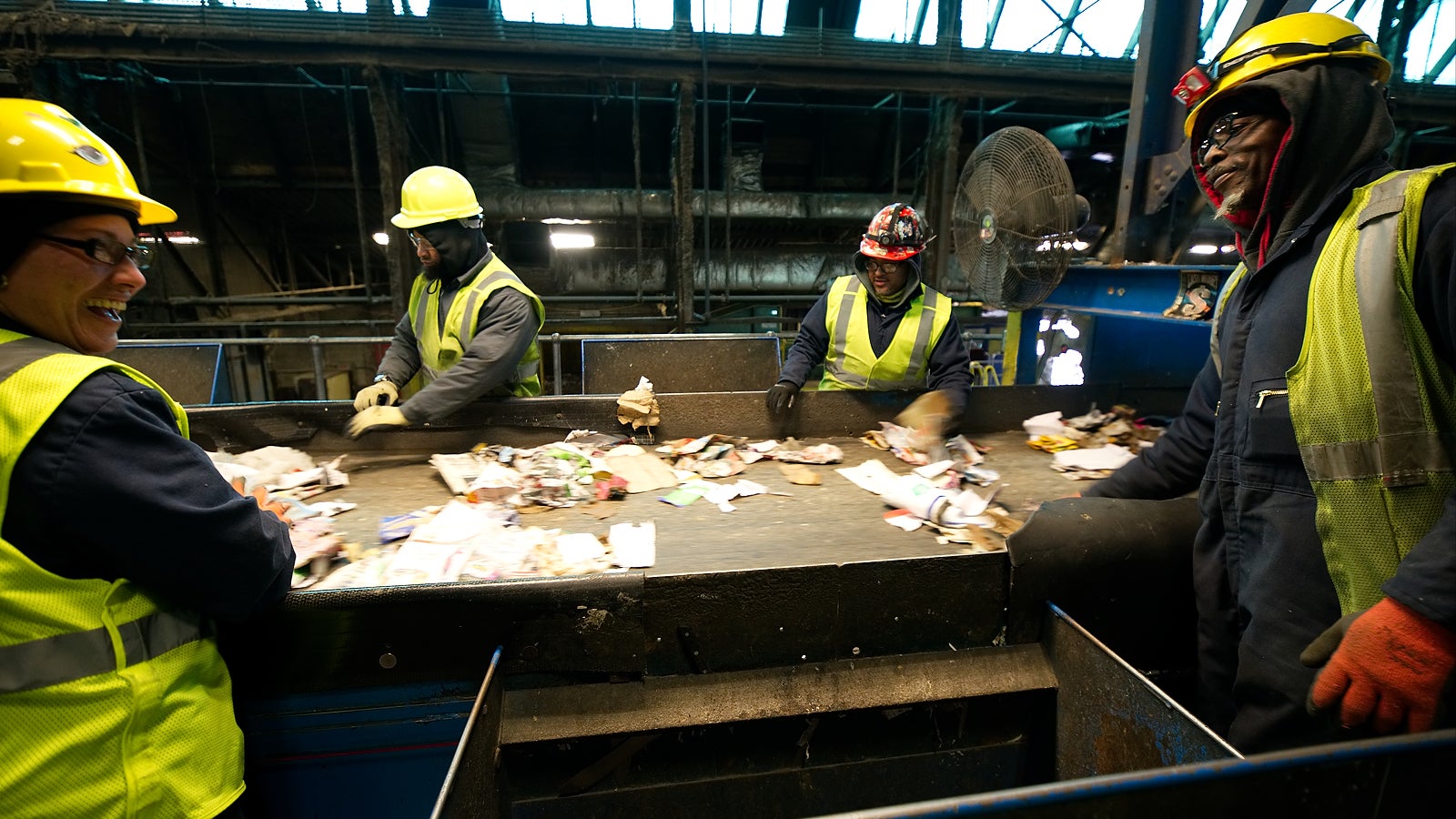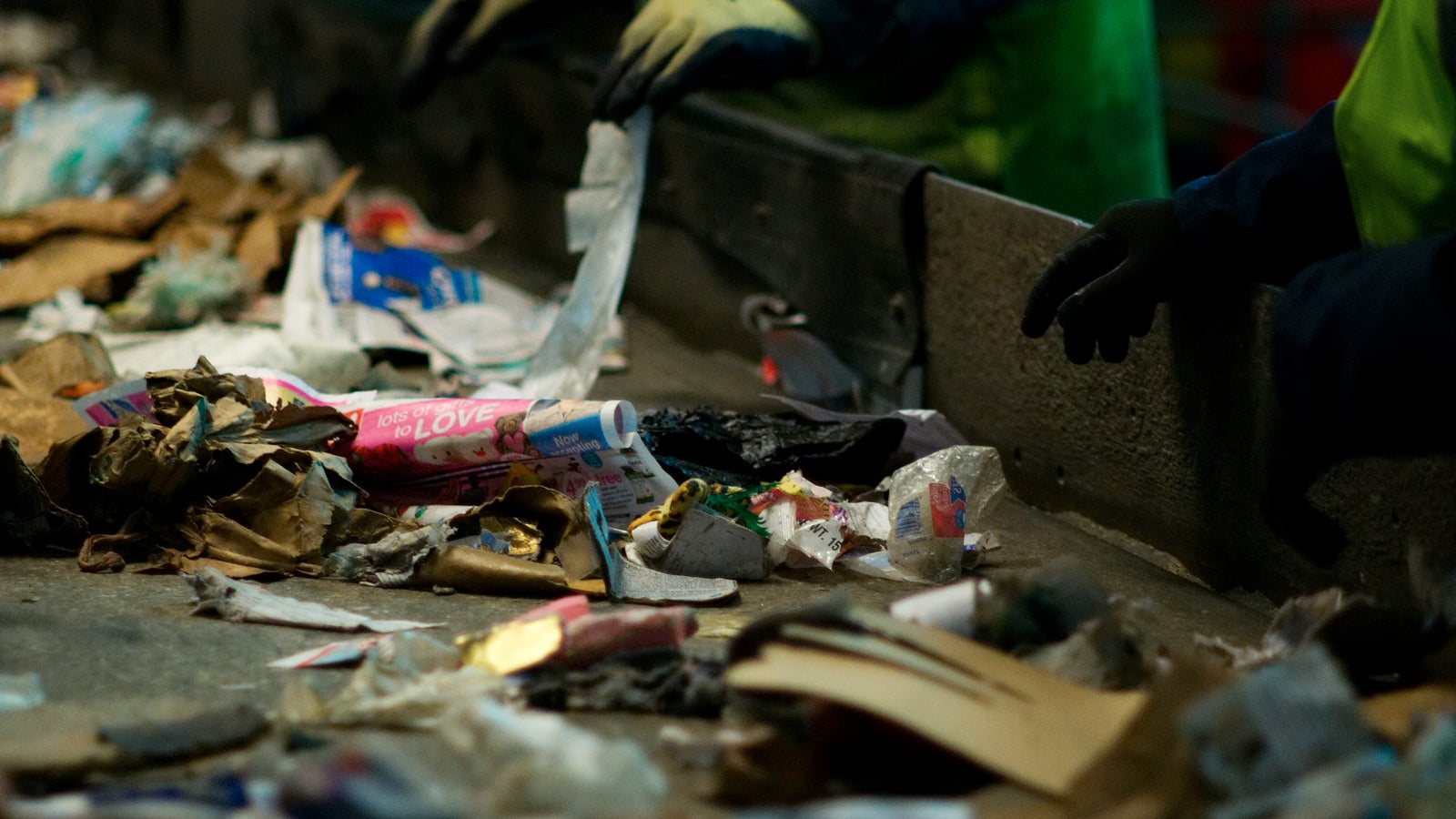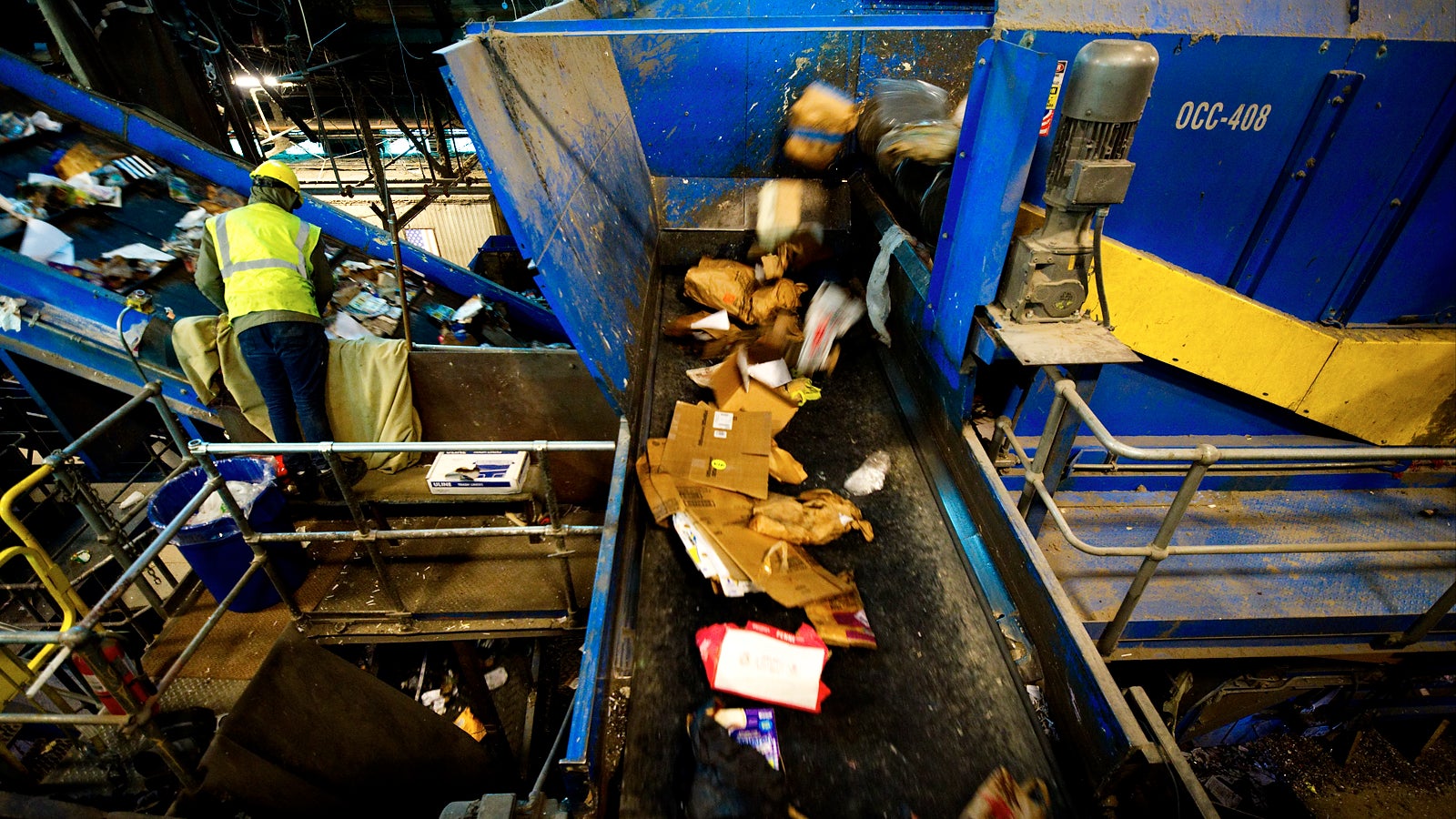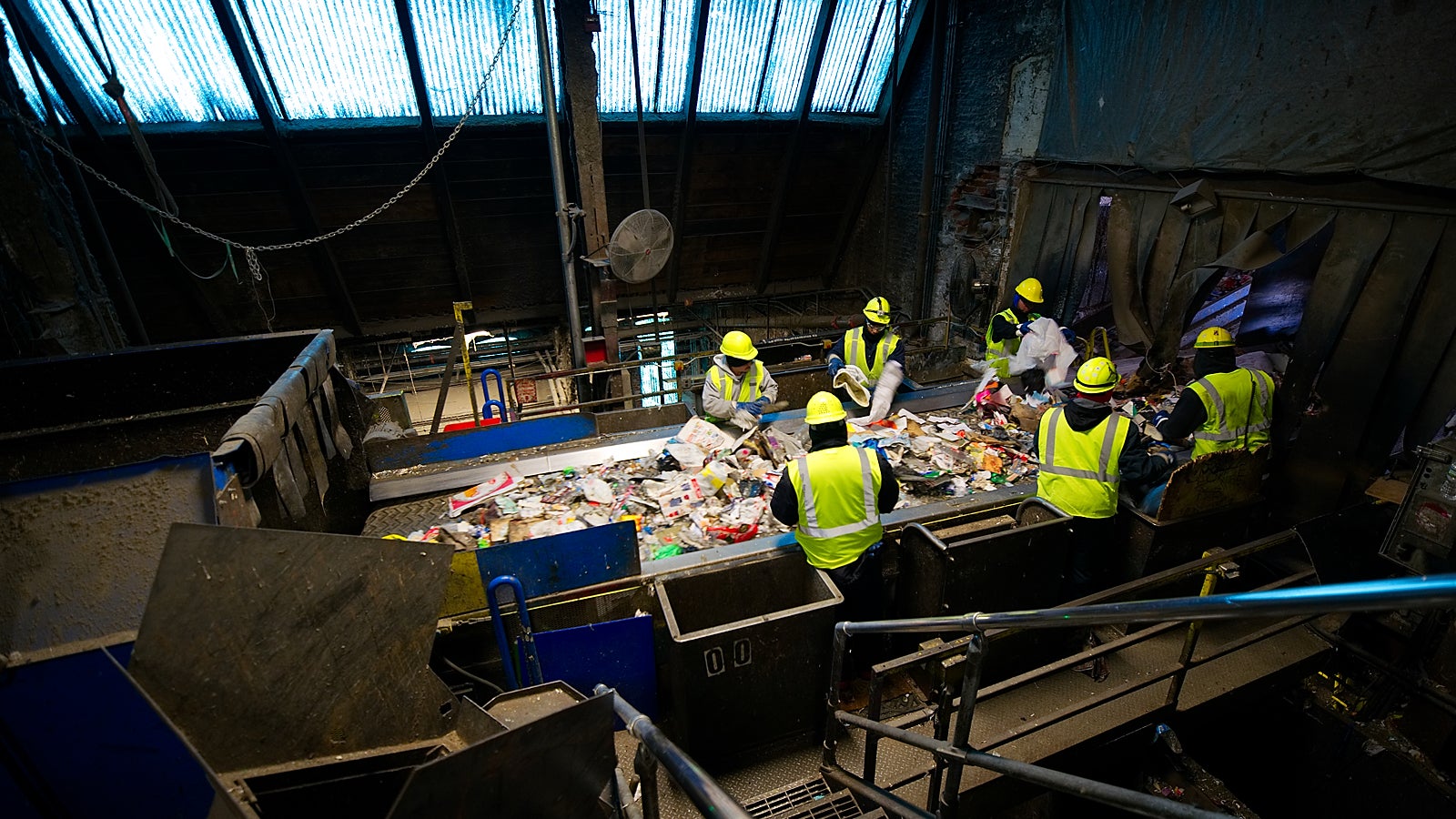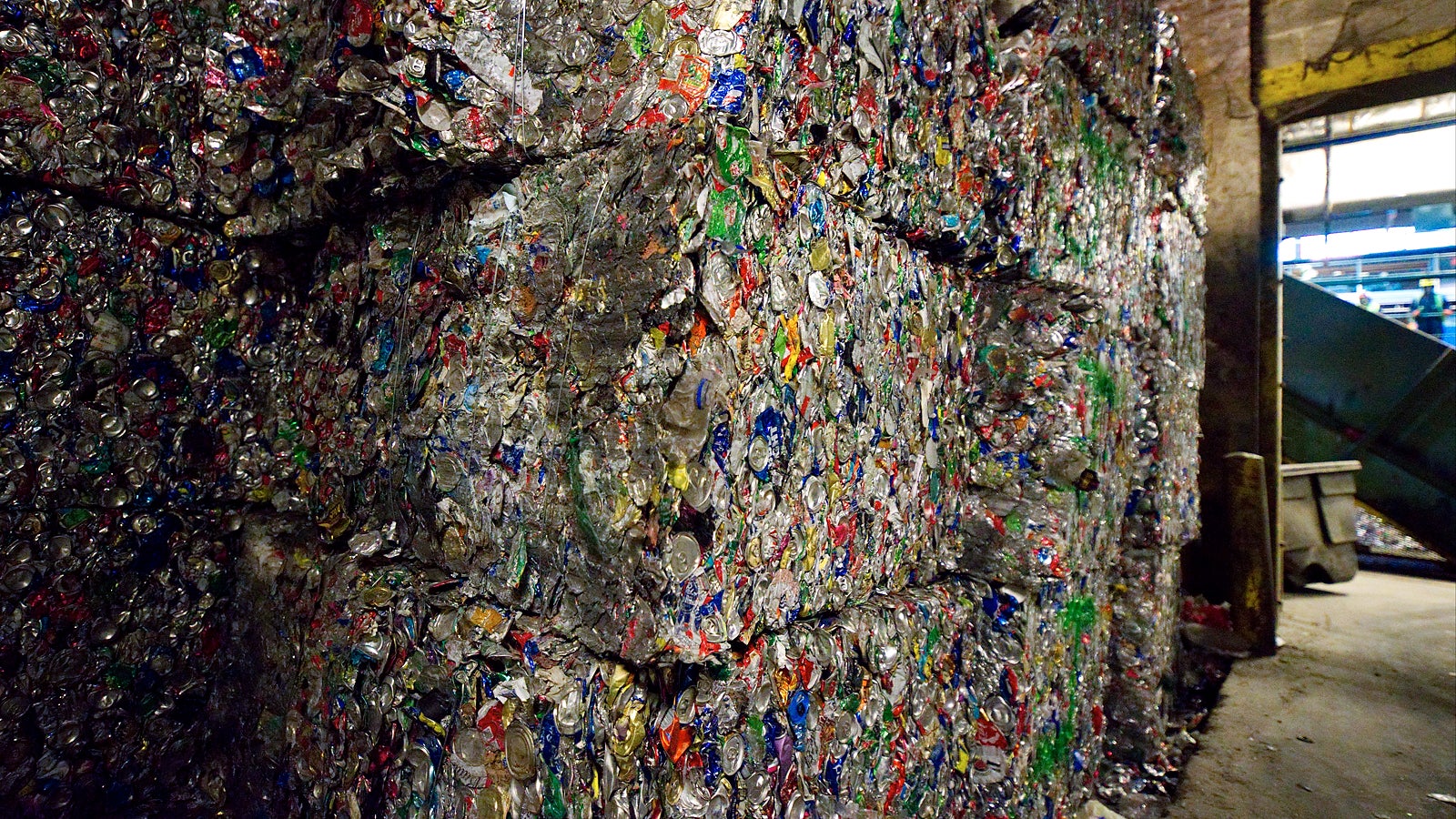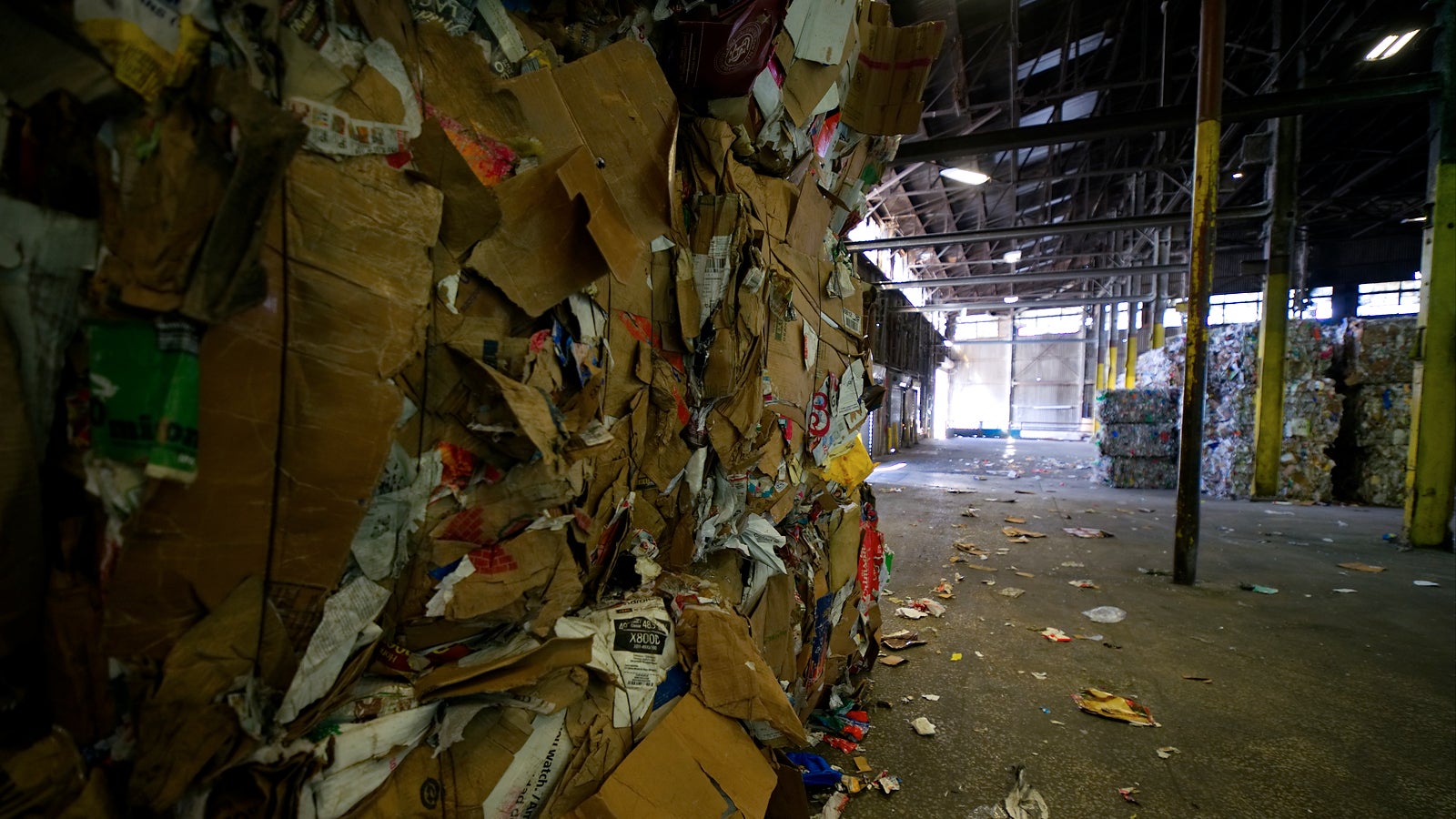Waste Not: Philadelphia’s route to better recycling
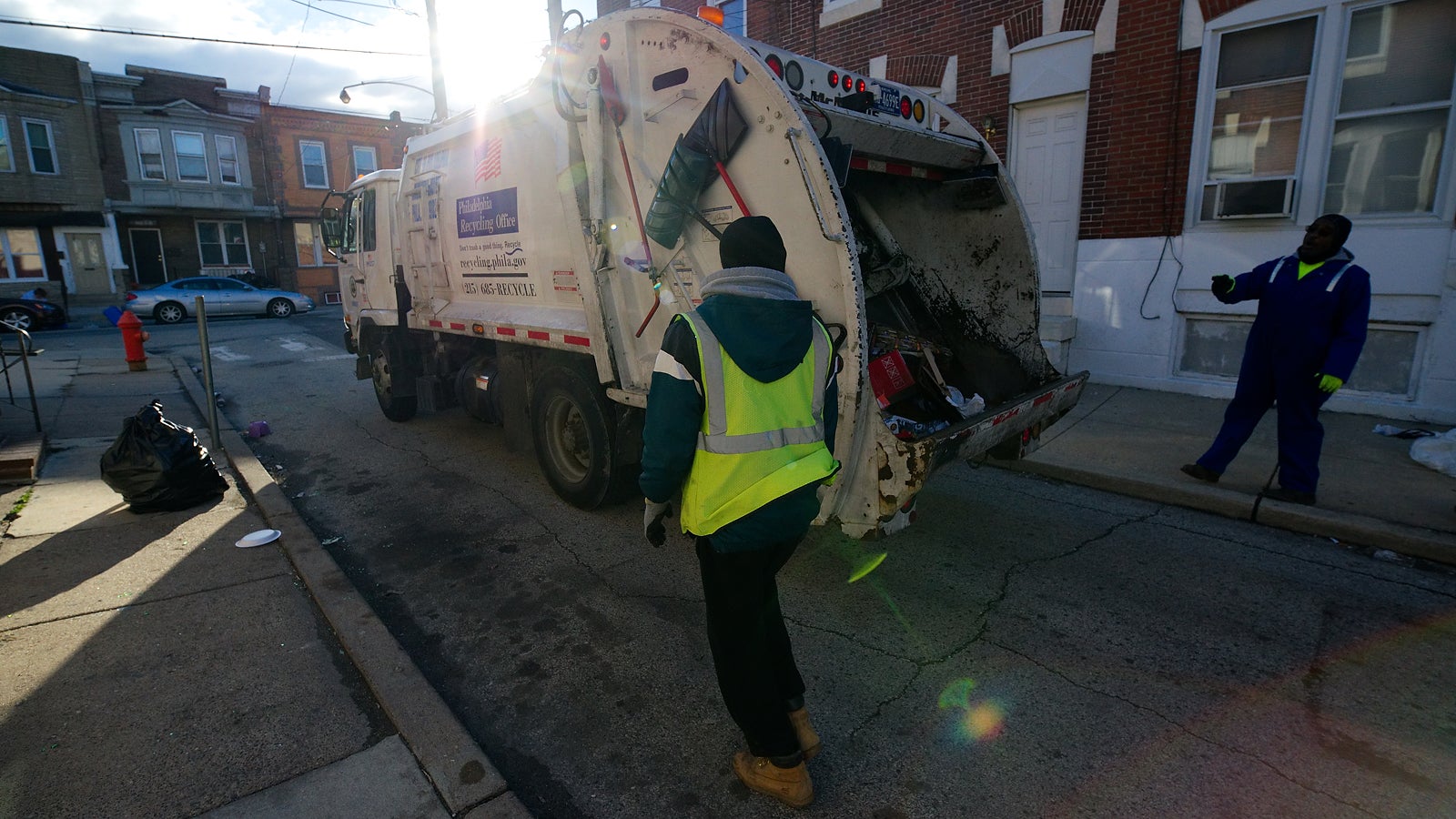
Philadelphia has set a goal to become a Zero Waste city by 2035. Throughout 2017, PlanPhilly will report on ways the city is working toward that goal by looking at the opportunities found in the waste stream – from compost to cogeneration, recycling to gleaning.
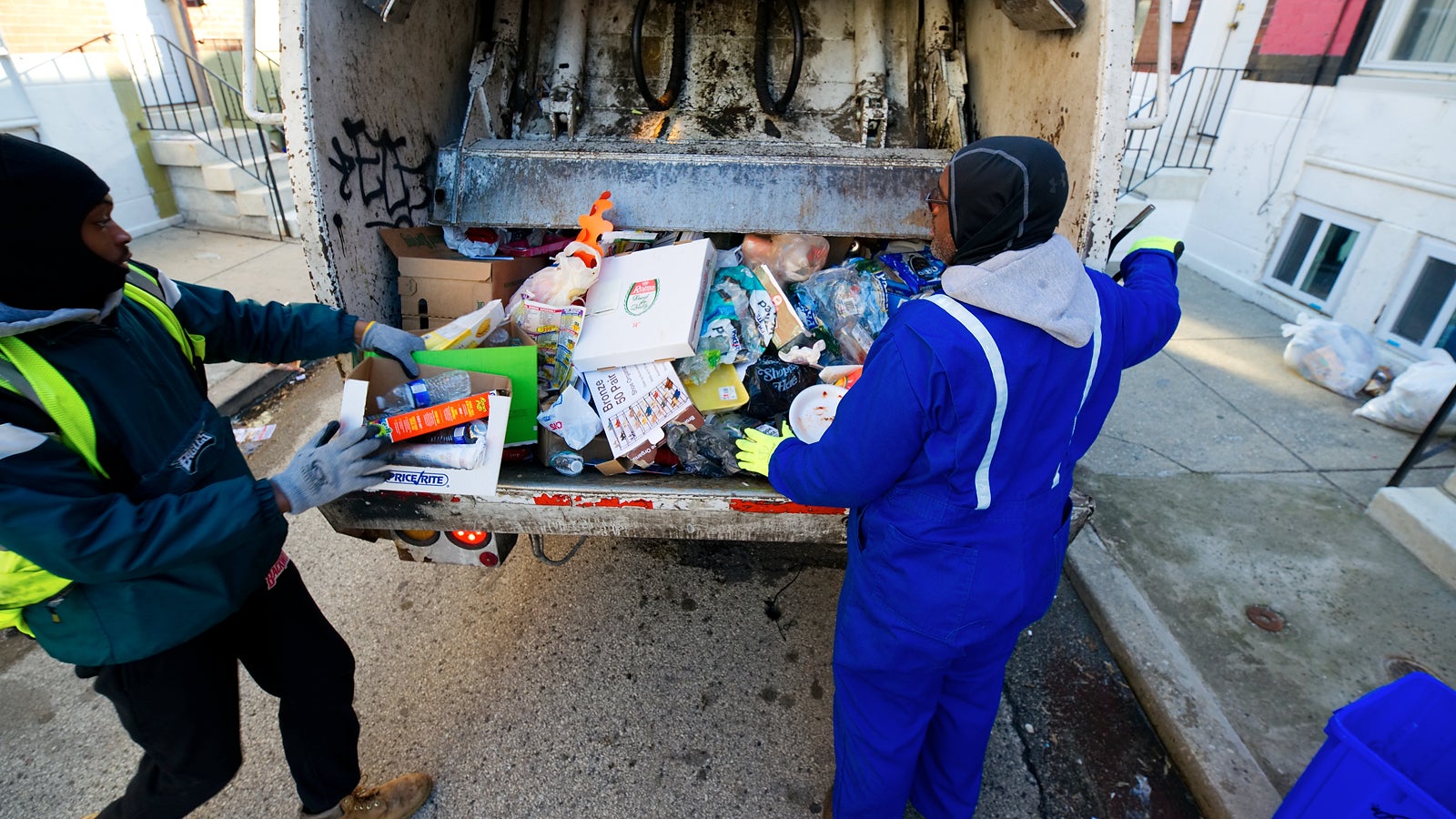
Can you recycle a greasy pizza box? How about a disposable coffee cup? What about clean napkins? Take the Philadelphia recycling quiz and you’ll probably be surprised at what is and isn’t actually recyclable.
If you’re like most people you’re not recycling perfectly. About 15 percent of the materials taken by municipal recycling crews and to the recycling center are not recyclable.
Recently Mayor Jim Kenney set a goal for the City of Philadelphia to reduce the amount of waste sent to the landfills and incinerators 90 percent. It’s an ambitious goal considering the city diverts 21 percent of the 623,474 tons of waste it collects in a year (38 percent counting private collection).
That percentage is small if you compare it with San Francisco’s 80 percent diversion rate or Portland’s 70 percent. But not so bad if we compare it to New York City’s 17 percent. According to the Environmental Protection Agency (EPA), in 2014, the United States recycled and composted 34.6 percent of its municipal solid waste.
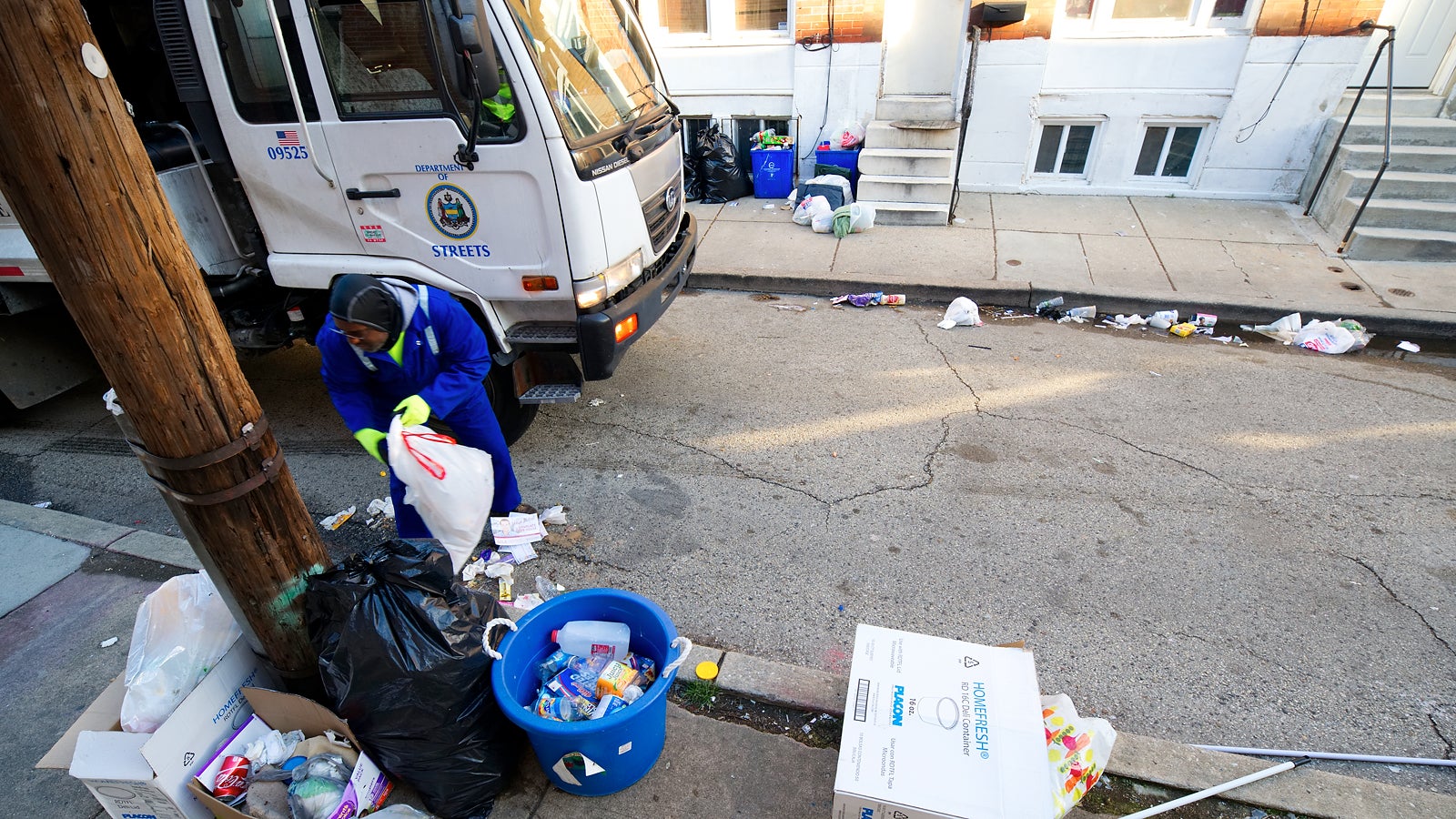
Philadelphia was one of the state’s first municipalities to have curbside recycling collection, starting in 1989. In 2009, the city switched from pre-sorted collection to single-stream, and from biweekly to weekly.
“As we transitioned to single stream, went to weekly collection then added recycling rewards, residents have responded, it’s hard to find a street without 70% to 80% participation,” director of environmental services at the Streets Department Scott McGrath told PlanPhilly via email. “Going from collecting 48,000 tons to about 120,000 are year is an accomplishment that residents should be very proud to have reached.”
As recycling has grown, so too has the contamination rate, meaning the amount of non-recyclable material collected with recyclables.
The city only collects certain recyclables, which can make compliance confusing. PlanPhilly followed a recycling crew, walking with the truck from the start of it’s route to the recycling center at Grays Ferry, to see firsthand what’s holding back residential recycling and how this affects the overall goal of higher waste diversion.
Simplify sanitation work: “Just recycle better”
On an extremely windy Monday morning in February, Christian Smith, 22, and Robert Green, 53, were working on the recycling route 204, in Point Breeze. Smith and Green followed a “9-yarder”, a 9 cubic yard trash truck driven by Robert Robinson, picking up blue bin containers from the curbside.
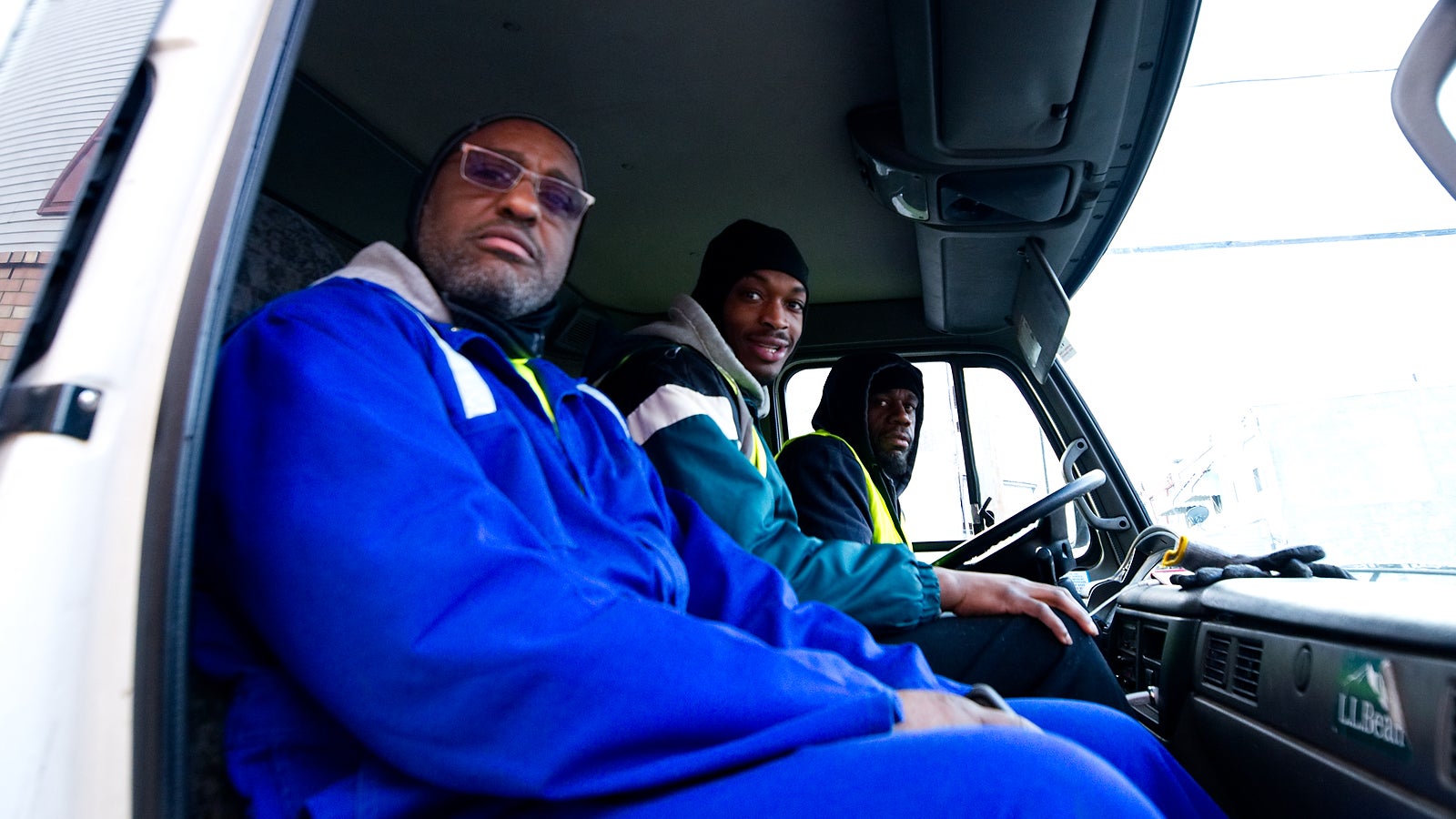
“We normally look through the can and see if there’s objects that don’t belong, and we take it out,” said Smith while emptying a recycling bin inside the municipal truck.
Sanitation workers try to sort as much as they can before throwing the material to the truck. But they’re usually moving fast, and don’t have time to do what the residents should do right. But to be honest, we Philadelphians don’t recycle well. Smith says lots of people put cans and bottles out in plastic bags.
“I normally shake them and knock them against the ground to see if I hear any bottles or cans, and if they’re really light, and you can see through the bag, you can see that they got recycle in it, cause they’re very light,” Smith said while demonstrating.
Putting recyclables in opaque plastic bags also put sanitation workers at risk, because they might get cuts or injures when they open bags without knowing what’s inside.
“For example this,” Green said while opening a big plastic bag. “They don’t know that you’re not supposed to use black bags. We don’t take plastic bags, but all of these is recycle. It’s a shame, it’s all recycle.”
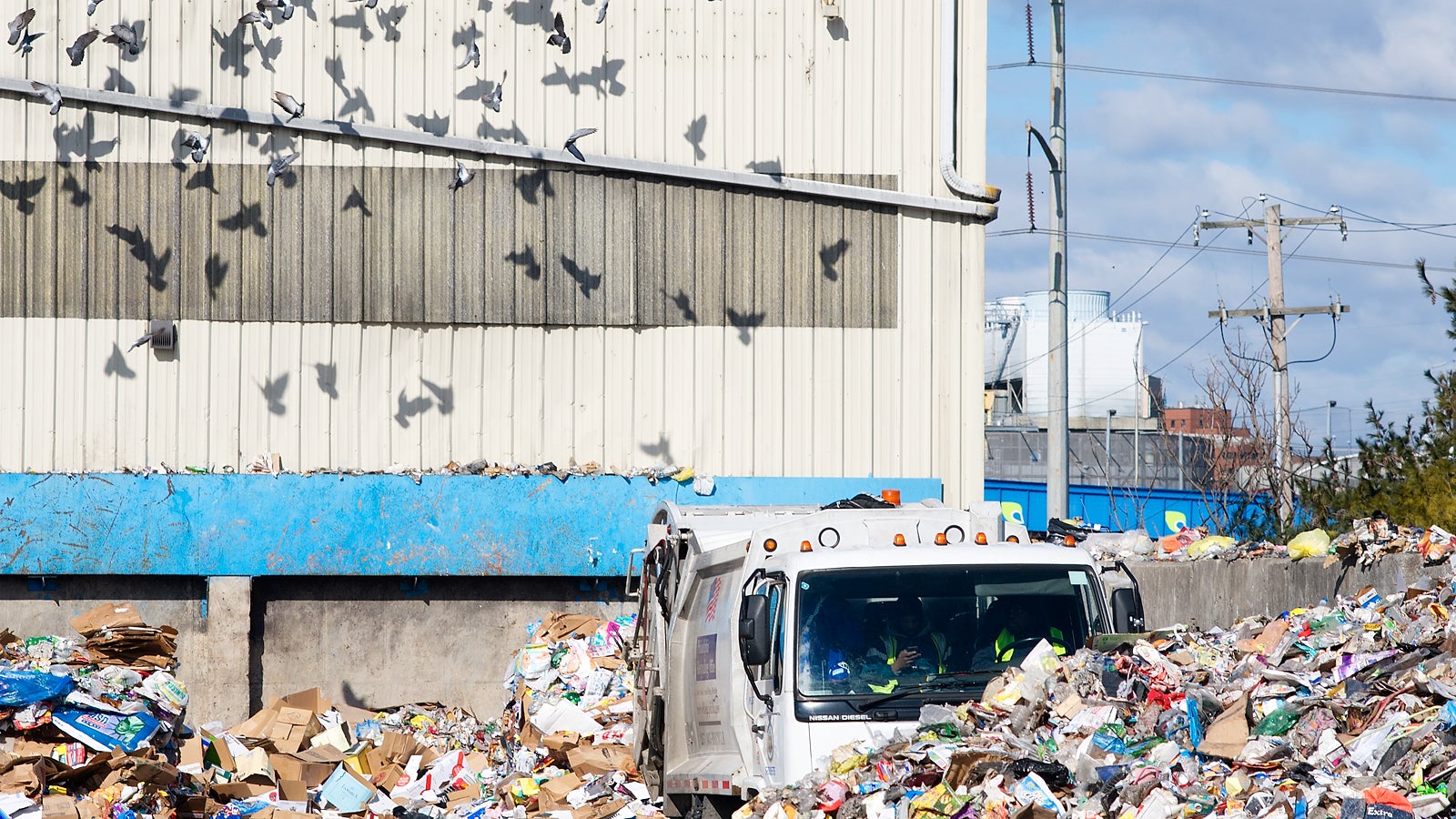
Cans and bottles inside plastic bags likely will end up in a landfill because they look like trash. Plastic bags can’t be recycled at the curb because they damage the sorting equipment at the recycling facility. (Some supermarkets and grocery stores have special recycling bins to recycle plastic bags.)
There’s a long list of what does not belong in your blue bin, or next to it.
“No leaves, no black bags,” Green said, while hanging a plastic bag to the side of the truck to collect non-recyclables. “No heavy strict metals, no. Of course no copper or nothing.”
No toys, no electronics, no furniture. No food, no Styrofoam containers, and no disposable coffee cups.
“Just recycle better, that’s the biggest thing I would ask,” said Smith. “That saves us less time digging through the cans and picking up stuff.”
From piles of trash to “bales of money”
All of the city’s recycling is processed in one private facility: the Recommunity Recycling center located in South Philadelphia near the Grays Ferry Shopping Center.
Regional manager Robert Anderson took us through a big yard where trucks dump their loads.
“This is the truck that you were following,” Anderson said. As the truck dumps on the “tipping floor”, Anderson estimates it’s contents at less than $200. It looks like a big pile of trash, but it doesn’t smell that bad. Most of it is recyclable, except for what workers call contaminants.
“This part of the load is really rough part of the load because there’s a tremendous amount of food waste right here,” Anderson said.
Food is big a contaminant; it’s not recyclable and it spoils paper and cardboard. So is that electric cord, those t-shirts, and that broomstick.
“You would be surprised by what we find in here, we find all kind of stuff in here,” plant assistant manager Edwin Rodriguez said. “Money, jewelry… Sometimes it be dead animals.”
Anderson said they found $30,000 in the plant in Camden, New Jersey. “Nobody came to claim it,” he said laughing. In Philly, they’ve found a “fairly substantial” amount of marijuana and a live hand grenade. They’ve also found dead bodies.
About 15 percent of what gets to the recyclable center is not recyclable and is sent to incinerators.
The amount of materials miss-sorted as recycling has been decreasing with education campaigns run by the city, like the recycling quiz or the Recycling Rewards program. According to Anderson two years ago it was 20 percent. But before single-stream collection, it was 7 to 10 percent. Marisa Nau, from Philadelphia’s Recycling Office, would like the city to get there again.
Before materials are mechanically sorted, employees at a pre-sort station take out of the stream materials that the facility doesn’t recycle, like plastic bags. Anderson said about 90 percent of sorting is done mechanically.
The biggest materials are sorted first. A big inclined series of rotating disks separate three-dimensional objects, like containers, from flat objects like paper and cardboard. Each series has different spacing between the disks, allowing different objects to fall through the disks or down the incline. Paper goes through a series of conveyor belts and machines to get sorted. Glass gets broken by metal disc and cans get pulled out by magnetic belts. Employees and optical sorters sort plastic.
The whole sorting process takes less than a minute, Anderson said.
The separated materials are compressed into cube bales that are easier to stack and transport. The paper fiber bales weigh about a ton. A bale of aluminum contains about 35,000 cans.
“I call that bales of money, that’s what is. That’s not trash to us,” said plant manager Rodriguez.
Different companies buy the bales to recycle them. Milk jugs and detergent bottles go to North Carolina. And most of our paper fiber goes to India and China.
“From the time that a resident puts the material into the recycling bin and it comes through my facility and ends up back in the supermarket, it can be as brief as 45 to 60 days,” Anderson said.
Even if the market for recycled material has been going down due in part to low oil prices, the city still saves money by recycling. On average, the city estimates that each ton of material sent to the landfill costs $65, and less than $15 to recycle it.

According to EPA’s 2016 Recycling Economic Information report, in 2007, recycling and reuse activities in the United States accounted for 757,000 jobs, $36.6 billion in wages, and $6.7 billion in tax revenues. The recycling center in South Philadelphia employs 110 people.
Recycling is also better for the environment because there’s less waste sent to landfills. But that only works if people recycle well.
“If you are uncertain whether something is recyclable or not, you really should err in putting it in the trash because if you’re really environmental cautious the last thing you want to do is put more resources into a non recyclable material that is going to take an extra trip to the facility, and extra trip through our process, only to end up as a disposable anyway,” Anderson said.
Still, the landfill is full of potential bales of money – things that could be recyclable or compostable. But Anderson thinks the solution isn’t to expand the recycling stream, but to capture what’s actually recyclable. It’s not about recycling more, he said, it’s about recycling better.
WHYY is your source for fact-based, in-depth journalism and information. As a nonprofit organization, we rely on financial support from readers like you. Please give today.



